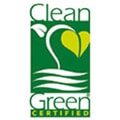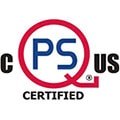5 QUESTIONS WITH NORMAND BRAIS

Normand Brais P.Eng, M.A.Sc. Ph.D.
Normand Brais holds a mechanical engineering degree, a Master of Applied Sciences, and a PhD in Nuclear Engineering from Engineering Institute after he graduated. He has founded several technological companies in various fields such as atmospheric pollution of stationary combustion equipment, biomass combustion, water treatment, photonics, and air/surface UV disinfection. In 1995 he founded Sanuvox Technologies, which is now a worldwide technological leader in UV disinfection of air and surfaces for hospitals, office buildings, laboratories, and greenhouses.
ASK THE EXPERTS, CANNABIS BUSINESS TIMES, JULY 2017
The quality of air in a cannabis grow can be the difference between healthy and unhealthy plants. To get a better sense of how to purify your environment, Sanuvox founder Normand Brais – who holds a Ph.D. in Nuclear Engineering and has founded several technological companies in various fields, such as atmospheric pollution of stationary combustion equipment as well as air/surface UV disinfection-shares how a better understanding of your air can lead to a better bottom line.
1 What specific airborne contaminants can be prevented or controlled by the greenhouse ventilation system?
Powdery mildew is by far the most problematic in greenhouse production. Although infections usually do not result in plant death, they reduce yield and crop value. A properly engineered germicidal UV system has proven effective at killing most airborne molds including powdery mildew and botrytis.
2 Where is a UV system located?
First choice is generally to place the UV BioWall-Max system within the ductwork of the A/C system, as most air will be passed through the A/C system at a typical rate of 10 to 16 changes per hour. If a facility does not have an A/C system, then one or several of our stand-alone fan-powered UV units can be installed to accomplish the same task.
3 What can and cannot be used to purify the air?
Testing has shown not to use PCO (photocatalytic oxidation), ions generators (also called plasma systems), ozone generators, or anything that is not naturally present in outdoor air. Some compounds and their radical derivatives will damage the plants and chemically attack terpene molecules. What can be done to purify the air is to bring the bio-contaminants spores into the A/C system and expose them to the germicidal UV lamps to photo-sterilize the mold and spores and return sterilized air back into the facility.
4 What should a cultivator’s disinfection targets be?
The air systems should be designed to achieve a 95-percent disinfection of powdery mildew every hour. A grower can have an outbreak of powdery mildew in under 12 hours, so having a system that achieves one air change per day or even one air change per hour will not successfully prevent an outbreak. UV systems can be installed in flower and veg rooms where the plants are most susceptible to powdery mildew and botrytis, but many growers use UV disinfection in every room of the facility, from cloning to loading dock, for excellent overall results.
5 We use filters, why isn’t that enough to control my indoor air quality?
Filters are mandatory to capture some large airborne particulates, but they have no ability to kill mold spores. To maintain an acceptable pressure drop and to avoid restricting the flow rate, most growers use MERV 8 filters that allow more than 50 percent of spore contaminants to pass through and infect the plants.





